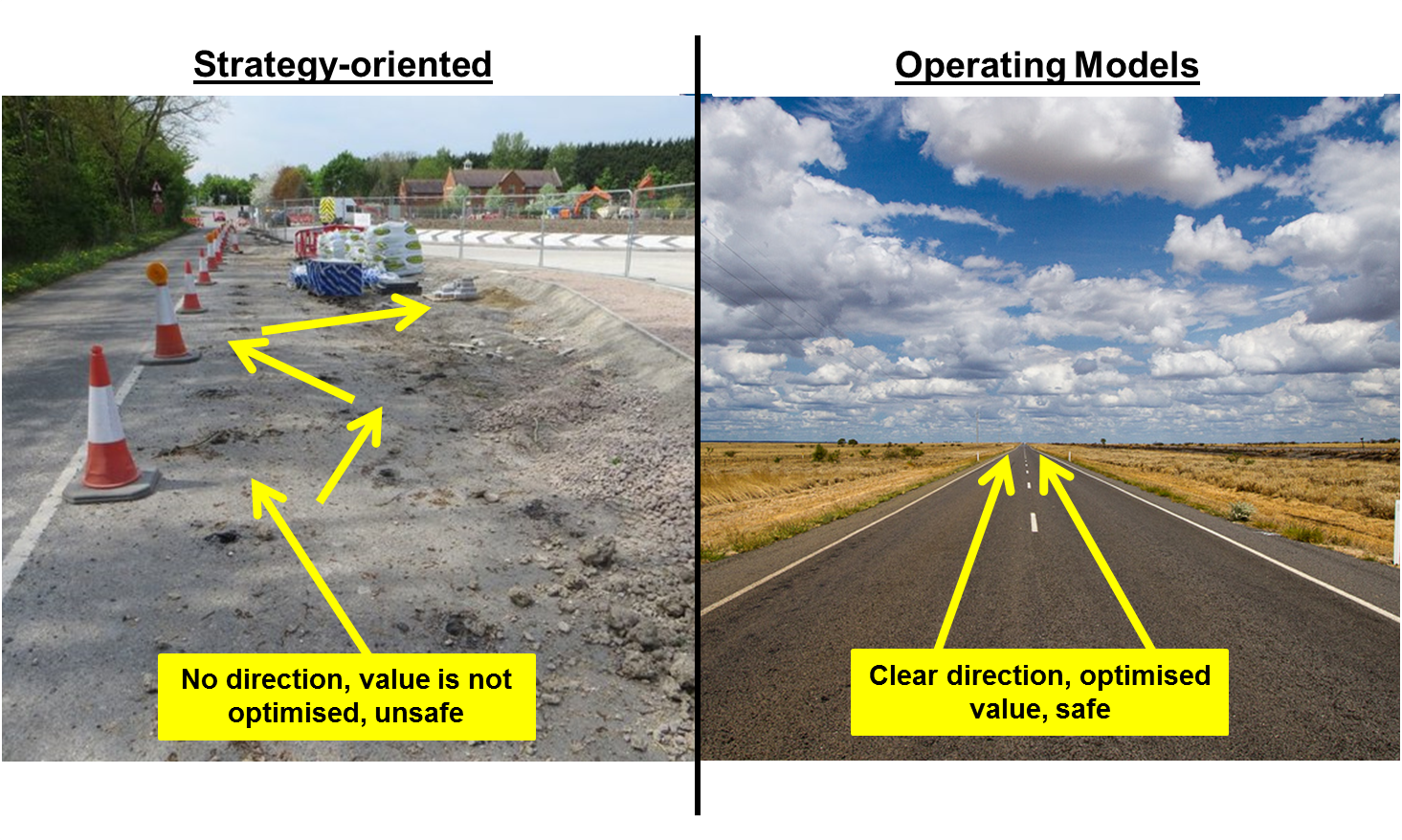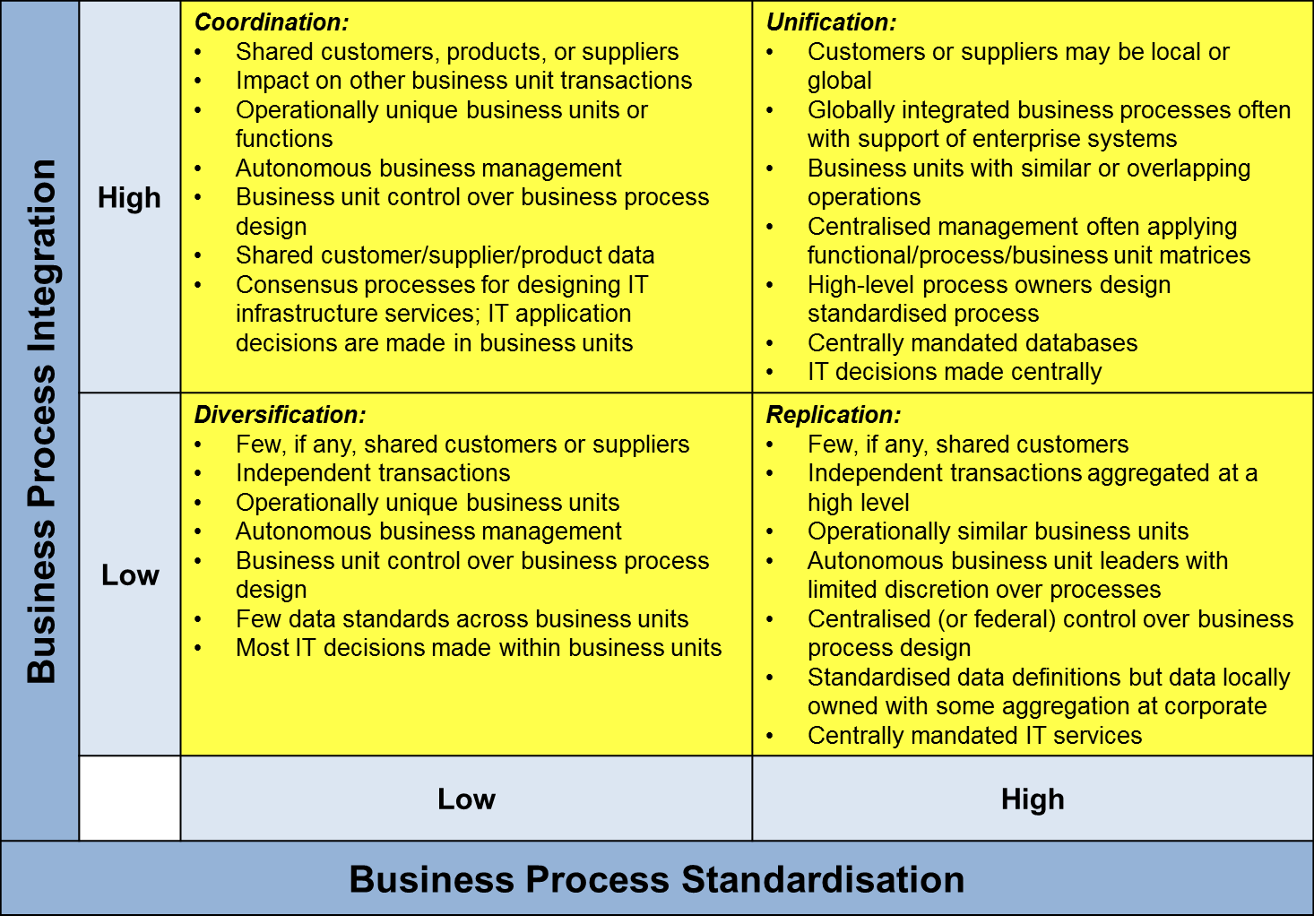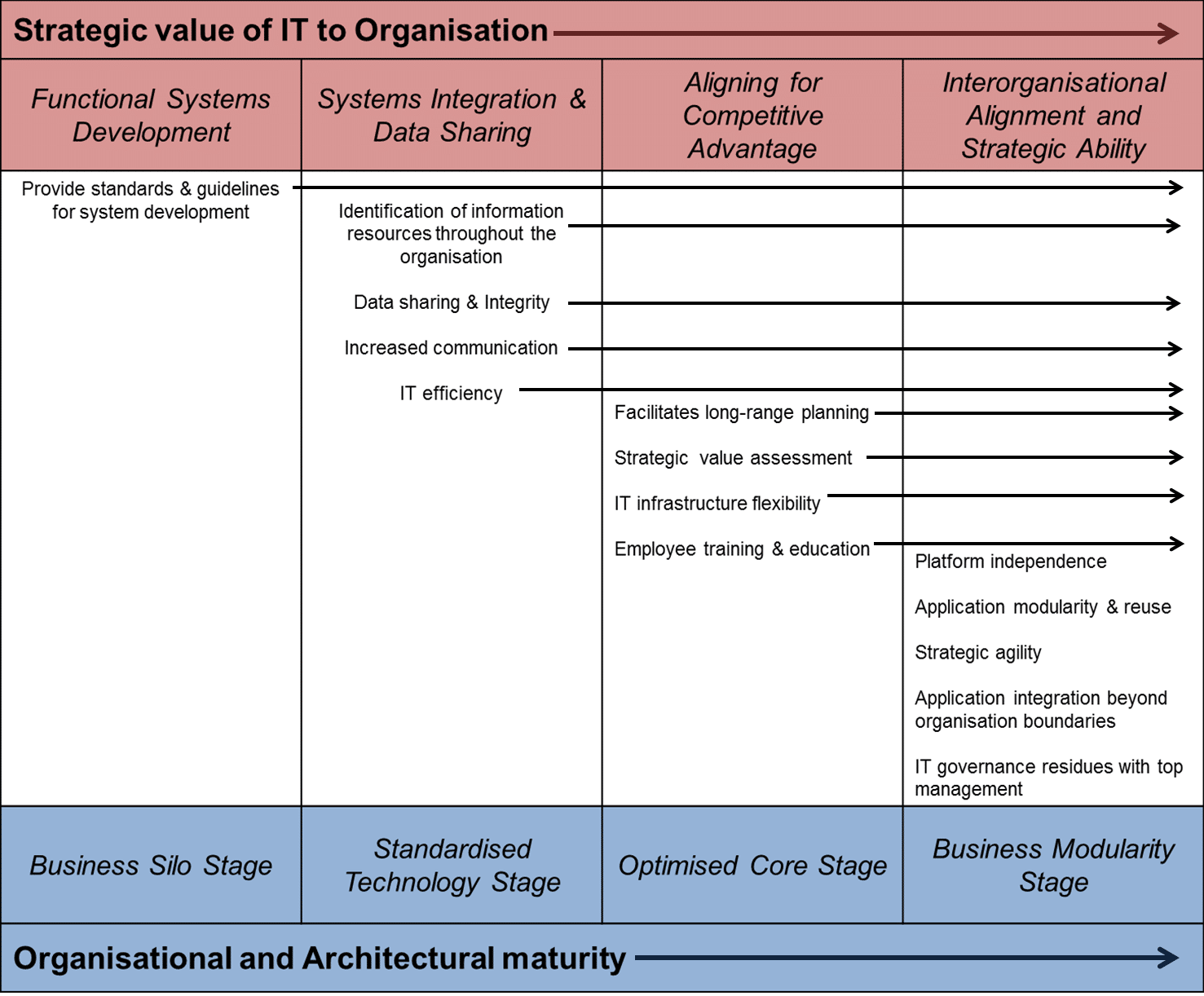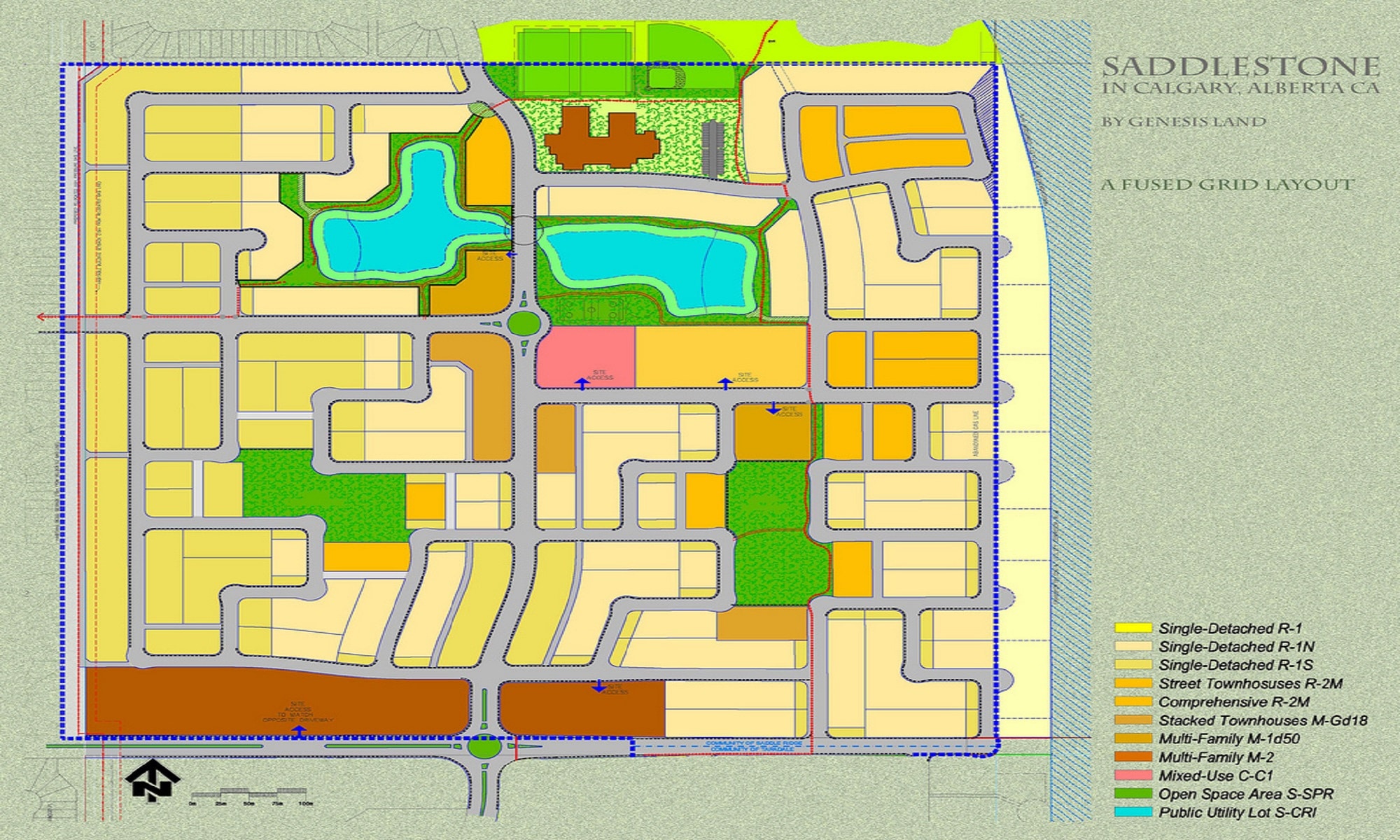Enterprise architecture
Enterprise architecture (EA) is an organising logic that organisations use to assist in the alignment of business processes and IT infrastructure. EA is important when executives attempt to aid their organisations in better leveraging their IT investments in an environment that has been characterised by more customer demands for products and services, more regulatory mandates, and an accelerated pace of technological change.
Simply put, EA is the attempt by an organisation to create new, more flexible organisation designs, management practices, and business processes in order to cope more successfully with the pressures of constant external and internal pressures brought about by their surrounding dynamic environment.
In this lecture, the use of Operating Models as a proactive approach to maximising value obtained from IT as well as architectural maturity will be discussed. Each concept will be explained within the context of aligning business and IT to optimise IT functioning and maximise value.
Operating Model
Many IT firms attempt to maximise IT value by aligning their IT counterpart with business strategy. This approach becomes problematic because strategy is a dynamic, ever-changing concept that may not prioritise the alignment of business and IT due to its multi-faceted nature and often shifting priorities. This does not provide a clear or stable direction for the IT counterpart, thus, value is not maximised. To combat this, companies should adopt an IT approach in which a specific operating model is defined.
An operating model can be defined as ‘the necessary level of business process integration and standardisation for delivering goods and services to customers’. Operating models are imperative for identifying integration and standardisation requirements and, therefore, defining critical IT and business capabilities. This allows a stable direction for the IT counterpart to be established and the value of it to be maximised.
To further understand this, consider the analogy of a car driving down a highway. Strategy-oriented approaches can be compared to a road that is unstable, full of potholes and rocks, and generally unsafe. The car driving down this road may have to change its course further along the road in order to avoid certain obstacles. Priorities shift, the environment is dynamic, and the direction is not clear. Just as this situation is not optimal for reaching one’s destination, strategy-oriented approaches do not provide a clear direction for the IT counterpart and do not maximise value.
Operating models can be compared to a road that is clear, well-painted and generally pothole free. The car is able to travel at a constant speed and the travelling is made more effective with a clearly defined direction. The same can be said in the context of an organisation. Operating models provide a clear direction by defining its capabilities and, thus, maximises the value. This analogy is shown in the image below.

Four alternating operating models exist, namely:
- Diversification model, in which business units pursue different markets with different products and services thereby benefiting from local autonomy in deciding how to address customer demands. Describes a decentralised organisational design. An example of this type of company is Carlson, a $20 billion company of related but autonomous hospitality business units.
- Unification model, in which the organisation pursues the need for reliability, predictability, and low cost by standardising business processes and sharing data across business units. Describes a centralised organisational design. A good example of this is airline companies like Delta, South African Airways, etc.
- Coordination model, in which the organisation focuses on integration by creating a single face to its customers or a transparent supply chain. Toyota Europe is a good example of this type of company. The share product data across countries so they can rapidly exchange vehicles and parts to service customer needs.
- Replication model, in which the focus is process standardisation. Units perform tasks in the same way using the same systems to create global efficiencies and brand recognition. A great example of this is the Mariott Hotel chain or McDonalds.
The organisation will target one of these models during the decision-making process regarding the design of its operations. During this process 2 major decisions will be made that dictate the model that will be adopted: 1.) how standardised the business processes should be, and 2.) how integrated their business processes should be.
In making these decisions and targeting an operating model, organisations will provide a clear, stable direction for the IT counterpart in terms its alignment with its business counterpart. This will ensure maximised efficiency and value.
The 4 operating models and their characteristics are shown in the table below.

Figure 1: Operating models (adapted from Ross, Enterprise Architecture: Driving business value from IT)
Maturity
Research done shows that IT firms go through 4 stages of architecture maturity as they navigate the enhancement of the strategic capabilities of IT. These stages are:
- Business Silo Stage, in which the organisation focuses its IT resources on developing functional applications.
- Standardised Technology Stage, in which the organisation focuses its IT resources and efforts on the development of IT standards and a shared infrastructure.
- Optimised Core Stage, in which the organisation shifts its focus from shared infrastructure and local applications to enterprise systems and enterprise-wide data sharing.
- Business Modularity Stage, in which the organisation focuses its resources on attaining strategic agility through the reusable business process modules.
It also shows a positive correlation between the stage of EA maturity and:
- The ability to manage external relationships
- The ability to lower operational costs
- Strategic agility
Most importantly, a positive correlation exists between EA maturity and improved business-IT alignment and risk management which, as discussed in previous lectures, are imperative for the long-term success and management of an IT organisation.
All of the above is illustrated in the table below.

Figure 2: Architecture Maturity (adapted from Ross, Enterprise Architecture: Driving business value from IT)
Conclusion
All of the aforementioned information regarding EA, operating models, and architectural maturity shows that organisations utilising EA and its subdivisions will maximise their value by reducing IT cost and aligning business and IT counterparts in a way that is proactive rather than reactive. Focusing on the use of operating models gives the organisation’s IT division a clear direction by defining business and IT capabilities and focusing on integration. This coupled with the essential learning and growing an organisation needs to do through the 4 stages of architectural maturity is pivotal for the leveraging of its IT capabilities and provides a clear direction for the achievement of future goals and success for the organisation.
Resources
Bradley, M., Pratt, R., Byrd, T., & Simmons, L. (2011). The role of enterprise architecture in the quest for IT value. MIS Quarterly Executive, 10, 73-80.
Ross, J. (2006). Enterprise Architecture: Driving Business Benefits from IT. MIT Sloan Research Paper No. 4614-04.
Ross, J. Weill, P., Roberson, D. (2006). Enterprise Architecture As Strategy: Creating a Foundation for Business Execution, Harvard Business School Press.
What is next
Previous Post |
Next post |
How to negotiate better |
Continuous Software Engineering |
For all our Modern IT Management Lectures.
For all our Podcasts.
